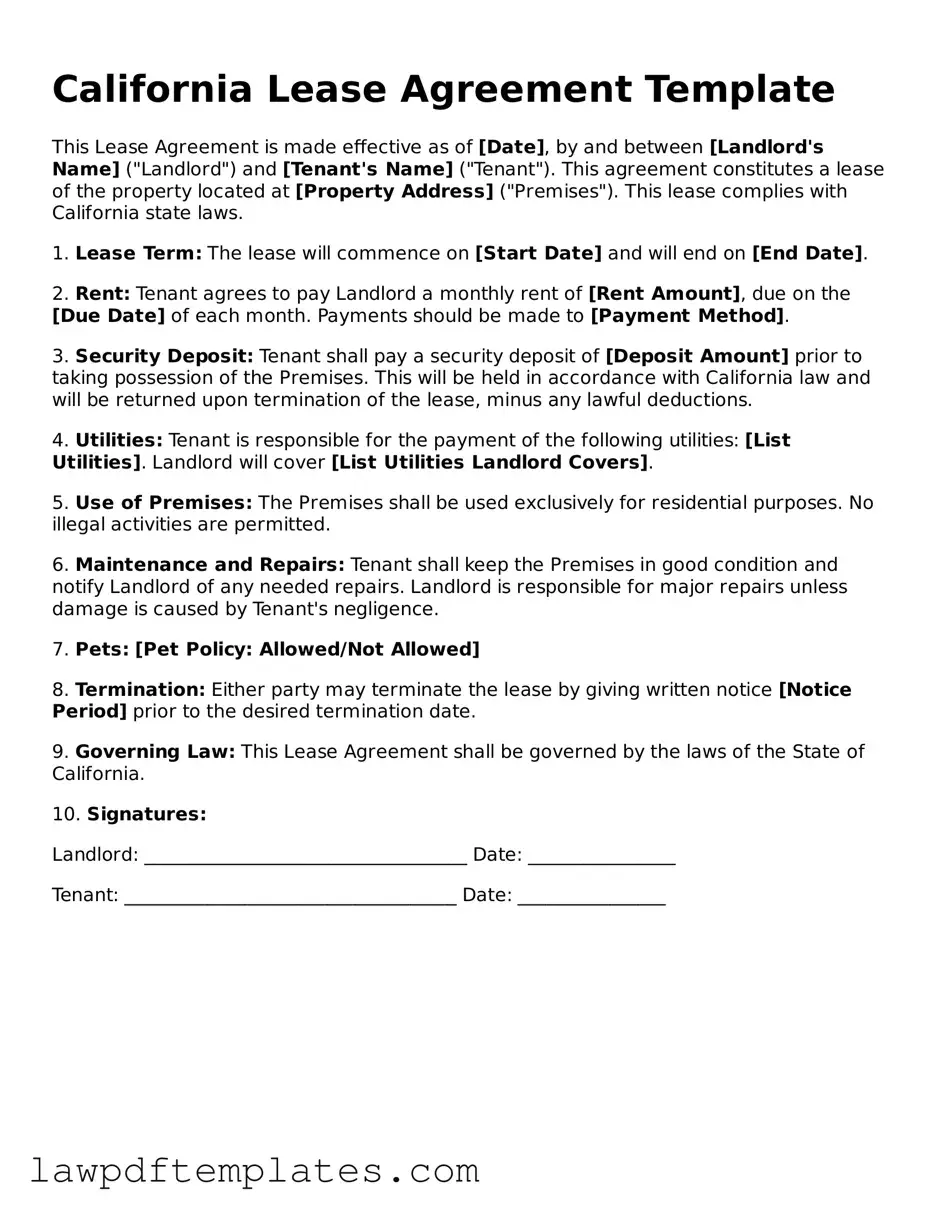California Lease Agreement Template
This Lease Agreement is made effective as of [Date], by and between [Landlord's Name] ("Landlord") and [Tenant's Name] ("Tenant"). This agreement constitutes a lease of the property located at [Property Address] ("Premises"). This lease complies with California state laws.
1. Lease Term: The lease will commence on [Start Date] and will end on [End Date].
2. Rent: Tenant agrees to pay Landlord a monthly rent of [Rent Amount], due on the [Due Date] of each month. Payments should be made to [Payment Method].
3. Security Deposit: Tenant shall pay a security deposit of [Deposit Amount] prior to taking possession of the Premises. This will be held in accordance with California law and will be returned upon termination of the lease, minus any lawful deductions.
4. Utilities: Tenant is responsible for the payment of the following utilities: [List Utilities]. Landlord will cover [List Utilities Landlord Covers].
5. Use of Premises: The Premises shall be used exclusively for residential purposes. No illegal activities are permitted.
6. Maintenance and Repairs: Tenant shall keep the Premises in good condition and notify Landlord of any needed repairs. Landlord is responsible for major repairs unless damage is caused by Tenant's negligence.
7. Pets: [Pet Policy: Allowed/Not Allowed]
8. Termination: Either party may terminate the lease by giving written notice [Notice Period] prior to the desired termination date.
9. Governing Law: This Lease Agreement shall be governed by the laws of the State of California.
10. Signatures:
Landlord: ___________________________________ Date: ________________
Tenant: ____________________________________ Date: ________________
